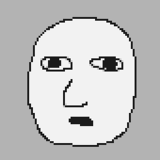Splitting the Difference: Part 3
By PistonHyundai 0 Comments
[This is the third entry in a series of blogs. It's recommended you read the first and second before you read this one.]
I'm probably not alone in this, but for the past few generations, I've thought of the PlayStation as the Exclusives Machine. The PlayStation 3's Cell processor made sure that it was a bad place to play a lot of third-party games, and the current gulf between how games run on a standard PS4 compared to a decent PC makes it more of a platform for games I can't play anywhere else. The upside to this is that thanks to a combination of choice partnerships and the wealth of studios they've acquired over the years, Sony's been having a damn good run at exclusives lately. Days Gone may be a disappointment in the eyes of a lot of people (that is, if they didn't write it off at first glance like I'm sure many did), but it's a rare misstep in what's been a fairly long line of solid work, including games like God of War, Bloodborne, and Uncharted 4. It's an impressive repertoire, but it's not something they just lucked into. It had to be built over multiple decades, which led to plenty of ups and downs. The PS3 got its fair share of shit early on for "not having any games," but even the original PlayStation had a fairly tumultuous history when you put it under the microscope. Of course they released plenty of great stuff back then, but being so fresh to the scene, they still had to figure a lot of shit out, both internally and in building relationships with developers. They had a lot to learn, and sometimes that led to ugly situations that would have a big impact on the games they released.
989 Reasons Why: SingleTrac & Sony's First-Party Growing Pains
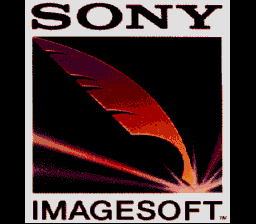
Sony's been in the video game business for longer than some people may expect, starting with publishing games in 1989 as CSG Imagesoft, Inc., an offshoot of Sony's music branch then known as the CBS/Sony Group. As Sony absorbed the CBS portion of this joint venture, the company would adopt a slightly more recognizable name: Sony Imagesoft. Largely focused on publishing movie tie-ins for Sony-owned motion pictures and localizing the occasional Japanese game (typically those that were published in Japan by one of Sony Music's other branches, namely Epic/Sony Records), Sony Imagesoft's output isn't quite the lineup you would expect from the company these days. They brought Super Dodge Ball to the States and released the underrated Smart Ball (developed by the young upstart team known as Game Freak), but you'll likely remember them from SEGA CD "classics" such as Sewer Shark and the Make My Video series. That being said, their most popular game was 1994's Mickey Mania, a decent (if unforgiving) 2D platformer with an excellent art style that is remarkably faithful to its source material. It was UK developer Traveller's Tales' big break, helping them turn into the LEGO game empire they are today, but it was also the first game Imagesoft tester David Jaffe worked on as a designer.
As the PlayStation loomed, Sony's video game business was a bit of a mess. You had Sony Imagesoft, their parent Sony Electronic Publishing, and Sony's Japanese branches doing stuff on the side. Things were far from organized, so there was a lot of housekeeping to be done before the launch of their first console. All of these companies were eventually consolidated into Sony Computer Entertainment umbrella, with Imagesoft folded into Sony Computer Entertainment America (which is known today as part of Sony Interactive Entertainment). With the PlayStation on the way, SCEA needed games, and following Mickey Mania's success, Jaffe's work earned him a lead designer job at the company. His first task was to assemble a team that'd help him create some of the console's first big games. After a visit to Evans & Sutherland, a Utah-based tech company that specialized in military simulations, Jaffe was left impressed by their 3D technology, so he and a group of E&S employees formed SingleTrac Entertainment Technologies. If you had to pick an MVP for the PlayStation's salad days, you'd be foolish to choose anybody but these guys. Naughty Dog was a huge deal thanks to Crash Bandicoot, sure, but in a time-frame spanning the console's US launch in September 1995 to late 1997, the studio developed a whopping five games: WarHawk, two Twisted Metal games, and two Jet Motos.
We were literally working for the survival of the company at SingleTrac. We had less than twelve months to create two games from scratch, with no pre-existing engine and a software development kit and target hardware that changed regularly. I remember looking around the room and seeing pretty much the entire company working hard at their desks, and then glancing at the clock and realizing it was nearly 1:00 in the morning. I don't remember management ever insisting that people put in those kinds of hours. It was just that everybody there was responsible and committed, understood there was nobody else to take up the slack, and we had to ship two great games in time for launch. We were under a lot of pressure, but highly motivated and really excited about what we were doing. And as far as making games was concerned, we were all total newbies. -SingleTrac programmer Jay Barnson, PC World interview
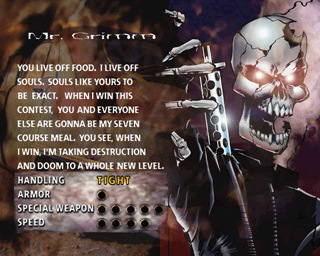
Twisted Metal is the obvious standout of SingleTrac's library, and for good reason. A genre unto itself, the series took inspiration from car chases seen in films like Speed and the French Connection to offer a one-of-a-kind experience that combines the mechanics of a driving game with the frenzied combat and map control of an arena FPS. The first game is pretty rough to go back to (and was even criticized at the time for its lackluster graphics and spartan single-player content), but Twisted Metal 2 is a genuine classic. It expands upon just about every aspect, making the original game feel like a prototype by comparison. Gameplay takes the biggest leap, with the introduction of hidden abilities (activated by fighting game style d-pad button combinations) fleshing out the combat, supported by a diverse array of large levels to fight in. The stages in Twisted Metal 2 are maybe its high point, using a "World Tour" theme to showcase loads of iconic landmarks while boasting a shocking degree of interactivity. You can destroy much of the environment, revealing easter eggs (including hidden cheat code button combinations tucked away in clever hiding spots) and even changing the layout of the map itself. Blowing up the Eiffel Tower is a memorable moment on its own, but having the tower's wreckage lead to an entire upper portion of the map elevates it past a simple novelty. TM2's presentation is also a huge upgrade from the prior game, doubling down on the over-the-top nature and replacing the original text scroll endings with FMV cutscenes rendered in a hand-drawn, quintessentially 90s style. The single-player tournament mode is fairly challenging to get through, but it's worth it just to see every character's ending (another aspect lifted almost directly from fighting games of the era). Everything is as pulpy and as edgy as you'd expect a David Jaffe Joint to be, and considering the game's ridiculous premise (comic book villain Calypso runs a vehicular deathmatch tournament, granting the winner a monkey's paw wish), the game earns it. I couldn't tell you the last time I played the game before this blog, but I remembered everything from map layouts to Calypso's can-only-be-pure-evil voice, and that's a testament to its design. The lack of analog controls makes handling your vehicle a bit more of a hassle than it should be, but it's still an great game and one of the best multiplayer experiences on the console. Unfortunately, after the success of Twisted Metal 2, things would take a drastic turn for the franchise—a turn that had way too much god damn oversteer.
After releasing multiple million-selling games and garnering plenty of critical acclaim in such a short time span, many at SingleTrac felt that they were entitled to more money than what Sony offered them in their contracts. Sony, on the other hand, was unsatisfied with Twisted Metal's performance outside of the US, so they were at an impasse. This dispute would result in SingleTrac breaking away from Sony—leaving Jaffe behind—and being purchased by publisher GT Interactive (a company that blew up thanks to securing the publishing rights to Doom, because everything in this blog series has to circle back to John Romero). Under GT, SingleTrac would tweak their winning formula with 1997's Twisted-Metal-but-underwater Critical Depth and the following year's Twisted-Metal-but-also-sort-of-Crazy-Taxi Rogue Trip: Vacation 2012, while Sony was left without so much as an engine to make a third Twisted Metal with. They would turn to their internal development team at 989 Studios (first known as Sony Interactive Studios America, a merger of Sony Imagesoft and SCEA's development team), a decision that would make a huge impact on the series.
Among the team on Twisted Metal III were William Todd, Ken George, James Doyle, Jim Buck, and a bunch of other people who did not have two first names. Buck in particular is a key figure here, as his experience working on Rally Cross and its physics system directly inform how the game plays. TMIII runs on a heavily modified version of the Rally Cross engine, sporting what Sony touted as the "TruPhysics" system, something supposed to offer more realistic vehicle dynamics for the series. Maybe it did that to a degree, but to truly understand the effect that this had on the game, I suggest taking a quick look at Rally Cross in action. Simply put, driving in Twisted Metal III feels terrible. You roll over all the time. Steering is either hopelessly lethargic with the slower cars (here's where that oversteer comes in, turns ending a good quarter-second after they should) or overly touchy with the speedier ones, with no happy medium in sight. When you're not fighting the handling of your own vehicle, combat can only be described as a step back from Twisted Metal 2. There's less opponents per round, and to compensate, each enemy takes way more of a beating, making weapons that could do some serious damage in prior games feel pathetically weak. New weapons like speed missiles are borderline useless, as you could freeze an enemy and rattle off a dozen right into them and maybe take off 10% of their health. The level design also takes a hit, with the game rehashing the worldwide motif of Twisted Metal 2 sans any of the creativity that made those arenas so memorable. Stages like Washington D.C. and Egypt feel barren, and there's a distinct lack of interactivity beyond blowing the occasional structure up. Worst of all may be the tonal shift from dark humor to pure cheese, which takes things from campy to just embarrassing. Twisted Metal was already a series you couldn't exactly take seriously, but there was a rough charm to the endings, acting as an incidental time capsule from the 90s. TMIII treats its endings as a total afterthought, leading to perfunctory FMVs with hideous CGI and twists that range from uninspired to groan-inducing. At the very least, the soundtrack is full of nu-metal that fits right in with the rest of the game's mostly-intentional schlock, thanks to tracks from Rob Zombie and Pitchshifter.
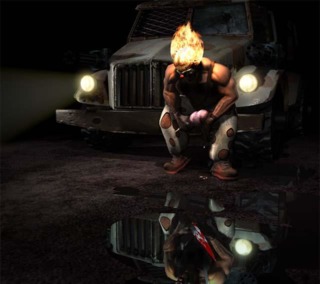
Of the games covered so far in this series, Twisted Metal III feels like the biggest victim of circumstance. Making a worthy follow-up to Twisted Metal 2 was a big undertaking to begin with, but the rift between Sony and SingleTrac was a death blow. The decision to transplant a vanilla racing game's staff and engine to the franchise was like a round peg in a square hole, turning Twisted Metal III into a huge disappointment that's widely regarded as the series' nadir. Twisted Metal 4 improves things a bit, but still pales in comparison to 2. Thankfully, the next entry would correct the course of the series. With a new console on the way and fan resentment towards 989 growing, Sony recruited Jaffe and Incognito Entertainment—a studio consisting of many SingleTrac veterans—to make the series' PlayStation 2 debut, Twisted Metal: Black. Hitting all the right marks and ignoring all of III and 4's contributions to the series, Black was the first Twisted Metal to feel like a proper sequel to TM2, and signaled a return to form that would continue until 2012's divisive PS3 entry, simply titled Twisted Metal. It's not a bad game, but it has its problems. I mean, how do you possibly balance a roster of vehicles that includes a helicopter?
Sony's own attempt at Twisted Metal ended poorly, but it's only part of the story. Despite crashing and burning with Twisted Metal III, their answer to SingleTrac's other series, Jet Moto, didn't fare so badly. For those unfamiliar with Jet Moto, just know one thing: it is fucking crazy. On paper, it's best described as Wave Race by way of F-Zero, taking hoverbikes across land and sea with the aid of grapple beams to swing around hairpin turns. It's stupid fast, and among the most challenging games on the PlayStation. Your bike moves insanely quickly, and the terrain is some of the most treacherous you'll come across in a racing game, and that's even before you get to the "suicide" courses, which feature 180-degree turns, whipping you directly into oncoming competitors. It's absolutely brutal, but exhilarating in a way far too few racing games are. Jet Moto 2 is especially wild, refining the turbo boost system and going beyond the natural landscapes of the original. JM2's courses are far more ambitious both in the layouts and their themes, featuring outlandish tracks that take place on city ruins, literal roller-coasters, and even Heaven and Hell (oh, and all of Jet Moto's courses are included, to boot). It's a savagely difficult game, but even losing efforts are absolutely thrilling.
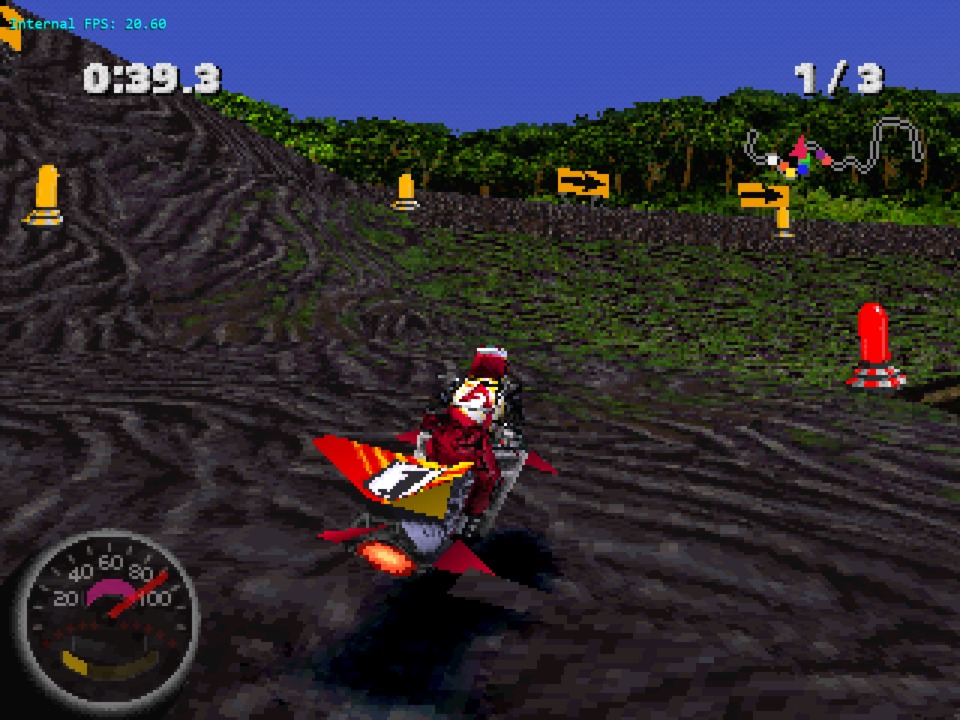
Given what happened with Twisted Metal III, you'd be forgiven for assuming the worst of Jet Moto 3, 989 Studios' follow-up to Jet Moto 2. It certainly doesn't help that 3's development was outsourced to a studio by the name of Pacific Coast Power & Light, which—on top of sounding like a company more suited for repairing a transformer than making a video game—was responsible for undesireables like Road Rash 64, Destroy All Humans! Big Willy Unleashed, and WWE Crush Hour (which is, ironically, a Twisted Metal clone). Fortunately, despite these potential red flags, Jet Moto 3 is actually pretty good. One of the bigger issues of the SingleTrac games was that they were downright ugly in spots, and ran at a mere 20 frames-per-second, which is hardly ideal for a racing game (the Championship Edition release of Jet Moto 2, which has an interesting story of its own, cuts the amount of rival racers down to three to get a locked 30FPS, resulting in the best way to play the game). Jet Moto 3 addresses both of these qualms, looking considerably better than its predecessors despite bringing the framerate up to 30FPS. That 30 isn't always stable, and I'm usually adamant about having racing games run at 60FPS, but it helps the sense of speed immeasurably nonetheless. JM3 is also much more focused on stunts, which gives it an edge when compared to its SingleTrac brethren. There's no tricks in the traditional sense, but in-air control is much snappier, a jump button is added, and stunt racing—a bonus mode from 2 where mid-air flips and rotations add to your turbo reserves—is now enabled by default. There's also a new score-driven mode played on unique stunt-oriented tracks, where you spin around like a madman snatching as many collectibles as you can on the way. It's reminiscent of the stunt mode in San Francisco Rush 2049, which is definitely a good thing.
Jet Moto 3 is possibly the best-playing game in the series, but I don't know that it's better than 2. The track design isn't quite as memorable, despite being larger in scale. Courses can branch out in multiple paths and laps can take over a minute and a half to complete, but there aren't nearly as many tricky jumps or corkscrews to conquer, and the settings aren't quite as varied. It actually can feel like a bit of a slog at times, which was never really the case elsewhere in the series. Still, after how Twisted Metal turned out, it's nice to see that Jet Moto didn't end up a casualty of SingleTrac's exit. It's a shame, then, that Jet Moto 3 was the final game in the series. PCP&L was working on a sequel titled Jet Moto 2124 that intended to take the series to outer space and bring speeds up to that of the Wipeout series, but it was cancelled by Sony after 3's mediocre sales. A PS2 entry, Jet Moto: SOLAR, was also planned, but never saw the light of day. It really sucks that the series has been dormant for so long, since modern racing game conveniences like Forza's rewind feature would make the blistering pace and devious tracks of the series more palatable to a wider audience. Hell, I'm surprised that the Motorstorm team at Evolution Studios never took a shot at it before they were shuttered, because they probably could've made one hell of a game.
In retrospect, a lot of people treat Sony's 989 era with disdain, and with games like Twisted Metal III and 3Xtreme, it's understandable. I don't even have any fondness for their well-received games, but if nothing else, the SingleTrac ordeal highlights the true value of a good team of developers. SingleTrac knew their worth, and while the 989 Twisted Metals may have been bombs, their poor reception taught Sony that crucial lesson the hard way, as proven by their eventual reunion with the team at Incognito. After all, you wouldn't want them sacking Naughty Dog and handing The Last of Us Part II to Media Molecule. Wait, actually, that sounds cool as fuck, but still, you really need the right people for the right franchise.
SingleTrac isn't the only developer Sony pulled from one of their hit properties, so next time we'll look at a Sony breakup that actually split a series itself into two different entities.
